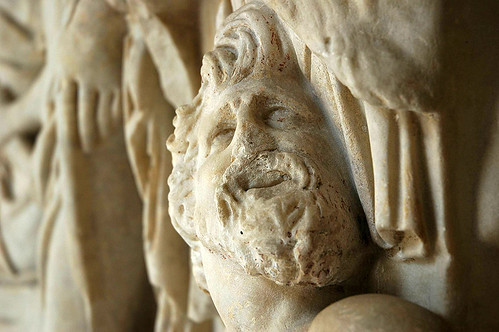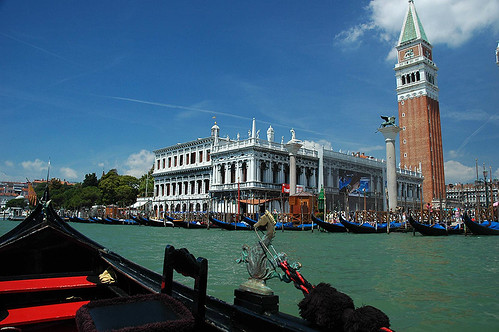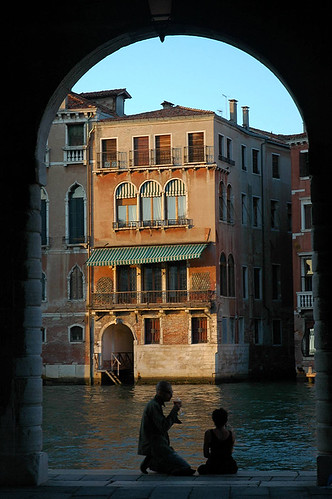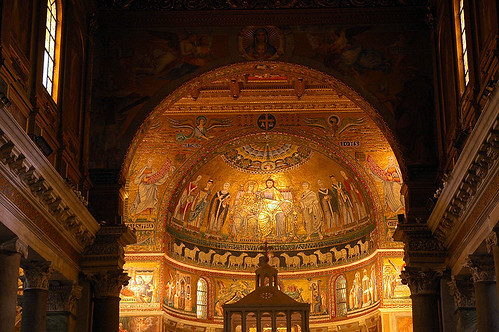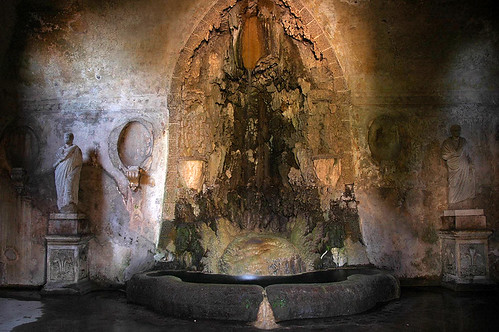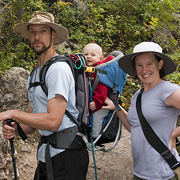Well, we made it to Venice (Venezia). But, I’ll save that trip write up for another day. Tonight, we’re taking a night off from walking and relaxing in our hotel room, playing with their internet (for 4 Euros an hour).
So now, I want to write about our time in the Vatican. We ended up visiting Vatican City (the smallest country on earth!) at least once in some form on Sunday, Monday and Tuesday.
On Sunday, it was to see St Peter’s Basilica. This was our first introduction to the conservative Catholic area, and it was interesting. The architecture was incredible, as you’ll see in our photos. The place was huge, and the detail was stunning. Wow. The church was quiet, even with thousands of people filling it, and sunlight filtered in from airy stained glassed windows through the humid air. We saw Michalangelo’s original Pieta, though none of my pictures turned out for all of the crowds in the way. The frescoed ceilings were awe-inspiring, and the sculptures and paintings gracing the walls were masterpieces, each and every one.
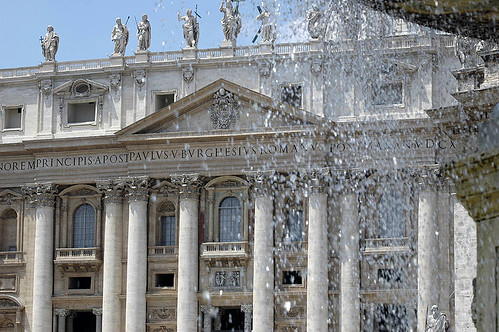
But, and I hate to say this, the signs of sexism in the Catholic faith are not so subtle. I was physically stopped before leaving the security gate (a hundred feet before the door to the building) until I put my shirt on covering my shoulders and upper arms. True, the rule is the same for both sexes, but it really seemed to be unevenly enforced on that hot July Sunday. While I saw plenty of men walking around in shirts with no sleeves, or shorts hitting at the knees, any woman with ruffles instead of sleeves was physically stopped or escorted from the premises. I saw one little girl (probably 9 years old) pulled away from her family because her knees were showing under her skirt!
At noon, we spilled out into the square with the other two thousand people in the area to wait for the Pope to emerge and bless the crowd. Right on time, he stepped to the window, and went through a quick blessing in Latin. The calls and responses were shown on the jumbo-tron TVs around the square, and everybody cheered and screamed and chanted like they were at a Purdue football game.
After the blessing, the Pope said a little something in several languages. “And to the pilgrims here today who speak English!” Followed by hysterical cheering by the English speakers. I think for us he said that regardless of our sects, as Christians we should all work together for peace. He also said a message in Spanish, French, Italian and German. And he sounded as though he spoke all of the languages fluently and familiarly.

The Vatican Museum (and Sistine Chapel) were closed that day, so Mark and I headed off to other adventures. We showed up at around 11am on Monday to see the museums, but the line was, actually, over a mile long. It wrapped around two full sides of the country! We waited for about 45 minutes and then gave up and headed back to Rome.
Tuesday we got up early, and when we arrived at around 8:30a, the line was quite a bit shorter. It only took 2 hours to get us into the museum. I haven’t posted the shots from that day yet, but there weren’t a lot. Flashes were strictly banned in many areas of the museum, and the one time I tried to get out my tripod, I got yelled at in Italian.
The museum had an incredible collection of ancient Egyptian, Roman, Greek and Etrusian artifacts. I really enjoyed these sculptures. Of course, the museum is known for it’s huge amounts of renaissance art, and we saw tons of it. We saw graphic depictions of the martyrdoms of most major saints: crucifixion, upside-down crucifixion, burned at the stake, drawn and quartered, shot full of arrows (St. Michael seems to be a favorite far and away), bitten by poisonous snakes, tied to an anchor and dropped in the ocean, beaten with sticks and tied to a brick and thrown in the ocean, and Mark thinks he saw somebody eaten by dogs.
The Sistine Chapel was amazing, but as I stared at it, I started to get angry. There are 4 women represented among the hundreds of male figures. One is, of course, the Madonna. Another is the pagan prophetess Sybil, whom Michalangelo painted with a very masculine body, several times on the walls. The others are Eve in the garden of Eden, and the snake giving her the apple. Yes, the snake has the tail wrapped around the tree and the body, head, arms and breasts of a nude woman, handing the apple out to her sister Eve.
It’s not pointed out in any books or by many tour guides, but the differences in the representation of women between ancient ‘pagan’ art and the classic Christian scenes is, well, day and night.
